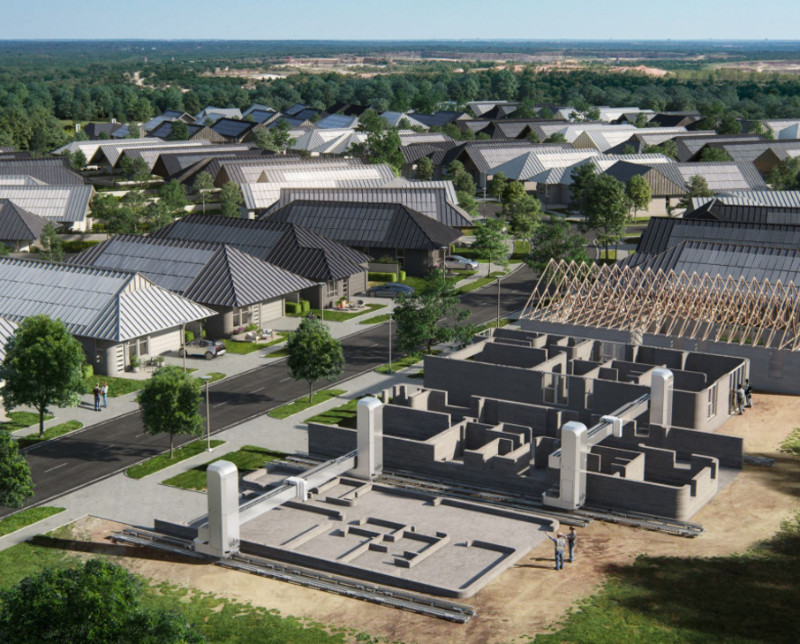
Construction is scheduled to get underway next year in Austin on what’s being touted as the world’s largest neighborhood of 3D-printed, single-family homes.
Miami-based Lennar, one of the country’s biggest homebuilders, and Austin-based ICON, a technology pioneer specializing in large-scale 3D printing, say the 100-home neighborhood will be built at an as-yet-undisclosed location in the Austin metro area.
“Labor and material shortages are two of the biggest factors pushing the dream of home ownership out of reach for many American families,” Eric Feder, president of LenX, Lennar’s investment arm, says in a news release. “Lennar has always expanded the boundaries of technological innovation to keep quality homes affordable, and 3D printing is an immensely encouraging approach.”
Lennar recently invested in ICON as part of a $207 million funding round.
ICON says its 3D printing technology produces resilient, energy-efficient homes faster than conventional construction methods with less waste and more design flexibility. ICON co-founder and CEO Jason Ballard notes that with a national shortage of 5.5 million homes, “there is a profound need to swiftly increase supply without compromising quality, beauty, or sustainability, and that is exactly the strength of our technology.”
ICON is a trailblazer in the growing market for 3D-printed homes. For instance, ICON has teamed up with Austin nonprofit Mobile Loaves & Fishes on a 51-acre community of 3D-printed homes for the homeless, and it has produced a cluster of four 3D-printed homes in East Austin. ICON’s Vulcan technology allows for the construction of homes as large as 3,000 square feet.
The Wall Street Journal broke the news of the 3D collaboration between ICON and Lennar.
“The vast majority of newly built single-family homes in the U.S. are constructed onsite and framed in wood using traditional construction methods,” the Journal explains, while Icon’s 3D-printed homes use concrete framing.
ICON’s 15.5-foot-tall printers can build the exterior and interior wall system for a 2,000-square-foot, one-story house in a week, Ballard tells the Journal.
“The printer squeezes out concrete in layers, like toothpaste out of a tube,” according to the Journal.
Although the 3D-printed homes will be technologically advanced, they might not be any cheaper than traditional homes. The Journal says Lennar hasn’t set pricing for the 3D homes, but buyers will pay about the same as what they pay for regular Lennar homes.
Article courtesy of CultureMap Austin | By John Egan
Image courstesy of ICON

